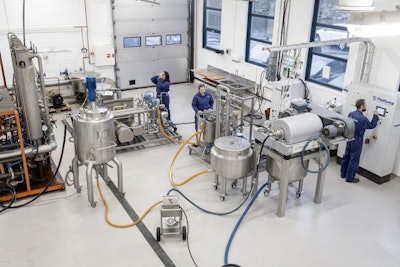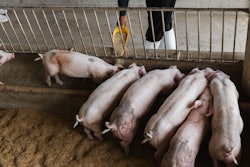
Novel feed ingredients draw excitement, but does their physical performance measure up?
Novel feed ingredients may have unique nutritional and other properties to offer, but if they cause the physical performance of the feed to suffer, then the nutrients will never make it to the intended species, according to Tor Andreas Samuelsen.
Samuelsen is a senior scientist at Nofima, a Norwegian research institute that is currently exploring the way novel feed ingredients such as insects, single-cell protein or algae affect the physical features of finished feed. Do they mix well with other ingredients? Is the feed strong enough to ship and withstand the pneumatic feeding used in aquaculture?
“If you have a new ingredient that makes it very difficult to produce highly durable feed, then the feed will not reach the fish, because it’s been crushed,” Samuelsen said.
Use of many novel ingredients may not be so simple as adding a handful to a standard feed formulation, but Samuelsen believes most, if not all, emerging ingredients on the market can be used. But feed manufacturers need to be aware of how these ingredients may differ from standard fare such as soymeal to avoid potential failures.
Rather than provide all the answers immediately, Sameulsen said Nofima’s goal is to develop a research “platform” that will give feed manufacturers a starting point as they introduce new feed ingredients.
“It’s all tried to open up the black box and try to understand and characterize ingredients,” he said. “We’re not here to say you cannot use these ingredients. We’re here to explain how they are different and how to improve the ingredient, and if a feed producer says, ‘we have a challenge with this ingredient,’ we can have the knowledge and analytical platform to solve the problem.”
Take, for example, fish protein hydrolysate (FPH), an ingredient Samuelsen said Nofima has worked with extensively. FPH can stand in as a sustainable substitute for fishmeal, and may even offer some immune-promoting properties when included in aquafeed. But it can also make a feed physically difficult to handle, Samuelsen said. The small sizes of the FPH molecules means the ingredient tends to plasticize the other ingredients when processing, acting as though you have used too much water in the process.
But the problem can be solved, Samuelsen said, by reducing the total amount of water included in the process making FPH-based feeds.
Samuelsen said Nofima is interested in doing additional research on other popular novel ingredients, especially insects, algae and single-cell proteins like yeasts. Their work may not seem as exciting as the development of the ingredients themselves, he said, but if you don’t know how to use an ingredient, you can’t.
“I believe it’s very important” work,” Samuelsen said. “If you cannot make the feed, then it does not have the nutrition.”















